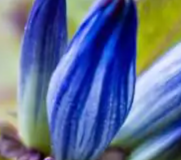Understanding the term ‘native plants’ is essential. I define them as species that occur naturally in a region, ecosystem, or habitat without human introduction. These plants are the backbone of their respective ecosystems, having evolved over centuries to thrive in their specific climates, soils, and alongside local wildlife.



Native plants are of special interest because they fulfill multiple ecological roles. For instance, they often form the base of the food web, providing essential nourishment for insects, which are then prey for larger animals. Plants like wildflowers and grasses are critical for pollinators such as bees and butterflies, whose existence is vital not just for the ecosystem but also for agricultural purposes.
The symbiotic relationship between native plants and wildlife is incredibly intricate. Certain species are so adapted to each other that one may not survive without the other. An example includes host plants for butterfly larvae. Without the right plant, a butterfly species might not have a food source for its offspring.
Beyond providing sustenance, native plants are crucial for other ecosystem functions. They help maintain soil health by preventing erosion with their roots and contribute to the water cycle. These plants are well-suited to managing the water in their locality. They reduce the risk of flooding and filter pollutants, improving water quality.
Invasive species pose a significant threat to the delicate balance maintained by native plants. These non-native invaders often outcompete indigenous flora, leading to a loss of biodiversity and disruption of ecosystem services. It’s a concerning trend, demanding our attention and action to protect native plant communities.
Having laid the foundation of why native plants are indispensable to our ecosystems, I now move towards exploring how you can contribute to habitat restoration using these incredible species. In the next section, I’ll guide you through effective strategies and insights into bringing degraded landscapes back to life with native plants.
Strategies for Effective Habitat Restoration Using Native Plants
When embarking on habitat restoration, the process must be meticulous and well-informed to ensure success and ecological balance. I start with a thorough assessment of the habitat, diving into historical data and pre-restoration conditions. This groundwork is crucial because it reveals what the ecosystem once supported and which species thrived there.
Next, I tackle the question of which native species to reintroduce. The right plants are those that are not merely native but are also suited to the current soil, climate, and coexisting wildlife. Picking species with the resiliency to thrive and support local biodiversity is more than just a horticultural choice; it’s a commitment to the ecosystem’s future.
Invasive species present a significant hurdle in habitat restoration. I’ve learned that simply removing them isn’t enough. There must be an ongoing effort to control their resurgence and to understand how they impact the environment. This way, the newly planted natives have a fighting chance to establish themselves.
As for the actual restoration techniques, I employ replanting strategies that mimic natural distribution patterns, which can enhance the survival rates and growth of native plant communities. It’s not just about planting seeds or seedlings; it’s about recreating a functioning ecosystem that can sustain itself and evolve.
Lastly, the work doesn’t end once the plants are in the ground. Monitoring and maintenance are critical to ensure the restoration effort doesn’t go to waste. Regular check-ups allow me to spot potential problems early on and take action. It’s a long-term commitment to the land and its native flora.
Real-world Impact: Success Stories and Lessons Learned
Recent years have brought to light many success stories that highlight the profound impact of integrating native plants into habitat restoration. These projects range from small community-led initiatives to large-scale conservation efforts. Each story not only champions the return of native species but also educates us on the resilience and adaptability of natural ecosystems.
In assessing these projects, it’s evident that restored habitats enjoy a surge in biodiversity, often leading to the return of pollinators, the increase of native wildlife, and the improvement in water quality. These benefits extend beyond the immediate environment, contributing to the overall health of our planet and communities. The strides made in ecosystem services, like erosion control and carbon sequestration, underscore the fact that native plants are invaluable allies in our ongoing fight against climate change.
The path to successful habitat restoration, however, is not without its challenges. Some projects have faced hurdles such as unexpected invasive species resurgence or unforeseen climatic events. These challenges are a crucial part of the learning curve, driving innovation and adaptive management strategies in the field of restoration ecology.
Community involvement has been the cornerstone of many triumphant restoration stories. These collaborative efforts underscore the importance of local stewardship and the power of collective action. By engaging community volunteers, educational programs, and partnerships, restoration initiatives foster a sense of ownership and responsibility among residents, ensuring continued care for the restored habitats.
As we look to the future, sustaining the momentum in habitat restoration using native plants will hinge on the sharing of knowledge and expertise. Continued research, adaptive management, and public education will be paramount in overcoming the environmental challenges that lie ahead. Each step forward in this arena serves as a roadmap for future endeavors, ensuring that the legacy of these restoration efforts will influence ecological recovery for years to come.
